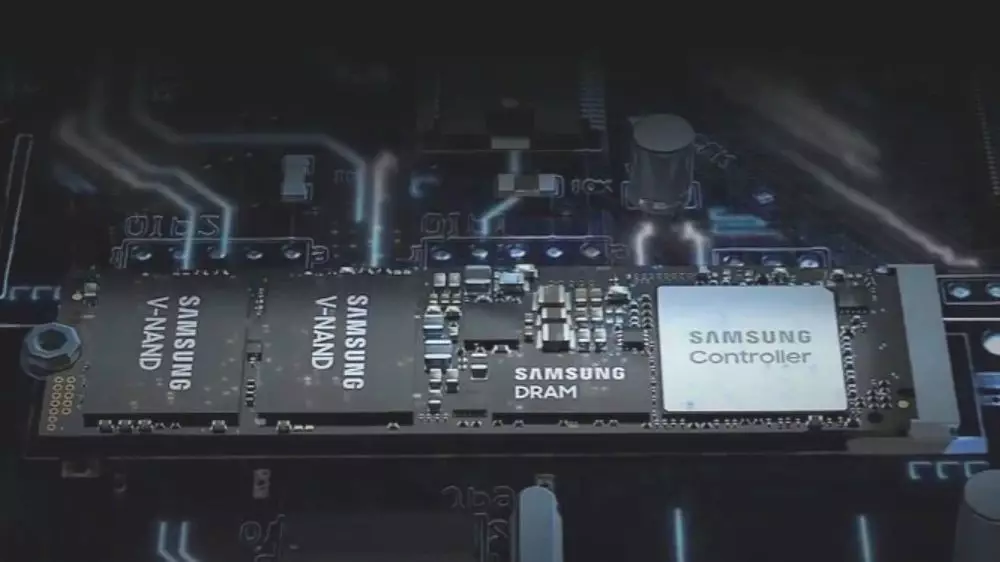Solid State Drives (SSDs) have transformed the landscape of data storage, particularly in gaming and high-performance computing. While PCIe 4.0 SSDs have established themselves as the standard for speed and efficiency, the entry of PCIe 5.0 into the market is poised to revolutionize the experience further. However, this transition has been gradual, and PCIe 5.0 SSDs aren’t yet mainstream, especially among PC gamers. The latest developments from major manufacturers, particularly Samsung, suggest that the tide may be shifting.
Samsung has recently unveiled its new PCIe 5.0 SSD, the PM9E1, which boasts incredible sequential read and write speeds of up to 14.5 GB/s and 13.5 GB/s, respectively. To put this into perspective, the previous generation PCIe 4.0 offered significantly lower rates, with maximum speeds of only 7 GB/s for reading and 5.1 GB/s for writing. This doubling of speed not only positions the PM9E1 as an industry frontrunner but also highlights Samsung’s ambitious leap into the relatively untested waters of PCIe 5.0 SSDs.
Samsung’s PM9E1 effectively outpaces its current competitors, including the Crucial T705, which has matching read speeds but slightly slower write capabilities. This performance leap could potentially secure Samsung’s place not just in the consumer SSD market but also as a catalyst for wider adoption of PCIe 5.0 technology.
However, raw performance isn’t the only metric that determines the practicality of these new SSDs. Many users remain skeptical about the actual utility of these advancements, primarily because the benefits of sequential read and write speeds can be misleading. These numbers reflect performance under optimal conditions but may not necessarily correlate to improved real-world usage, especially in gaming scenarios where random read/write speeds are crucial. Current PCIe 5.0 drives show only marginal improvements in these areas compared to their predecessors.
To complicate matters further, the efficiency of these new drives cannot be overlooked. Samsung claims that the PM9E1 is designed with power efficiency improvements exceeding 50%. This enhancement is likely attributed to their in-house 5 nm controller, which could lead not only to better thermal performance but also extended battery life in mobile devices. If future PCIe 5.0 offerings can maintain this balance of speed, efficiency, and thermals, consumers may finally see a viable alternative to present SSD technology.
Despite the promising specifications and technical advancements, the actual market readiness of PCIe 5.0 SSDs poses a challenge. High costs and excessive heat generation remain significant barriers for widespread adoption. Many current SSD models, including the initial offerings in the PCIe 5.0 category, have required robust cooling solutions, limiting their application in more compact devices such as laptops or handheld gaming consoles.
Moreover, for most gamers, the performance envelope of PCIe 4.0 SSDs remains sufficient. Current gaming hardware, including CPUs and motherboards, can support PCIe 4.0 without bottlenecking performance. Consequently, it raises the question: why rush into the uncertain domain of PCIe 5.0 when existing technology meets most needs? Consumers may hold back on upgrading until the ecosystem fully matures and real-world benefits are widely recognized.
The imminent arrival of motherboards with extensive PCIe 5.0 capabilities, such as the rumored Z890 and x870 platforms, promises an intriguing future. These new platforms are expected to support multiple Gen 5 SSDs, offering unprecedented options for enhancing gaming rigs and workstation setups. Coupled with the advent of artificial intelligence and machine learning technologies, which could benefit substantially from faster data transfer rates, the necessity for high-speed SSDs could become more pronounced.
While the current landscape is filled with uncertainties and challenges, Samsung’s PM9E1 is undoubtedly a step in the right direction. It holds the promise of ushering in the long-awaited era of PCIe 5.0 SSDs that are efficient and potent enough for gaming demands. If manufacturers can indeed refine these technologies to mitigate heat issues and cost I will play a crucial role in determining whether PCIe 5.0 will triumph over its predecessor. For now, the industry waits with bated breath as exciting possibilities unfold on the horizon.

